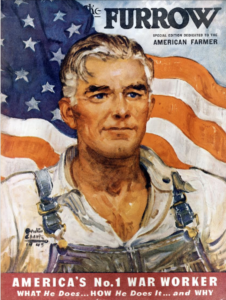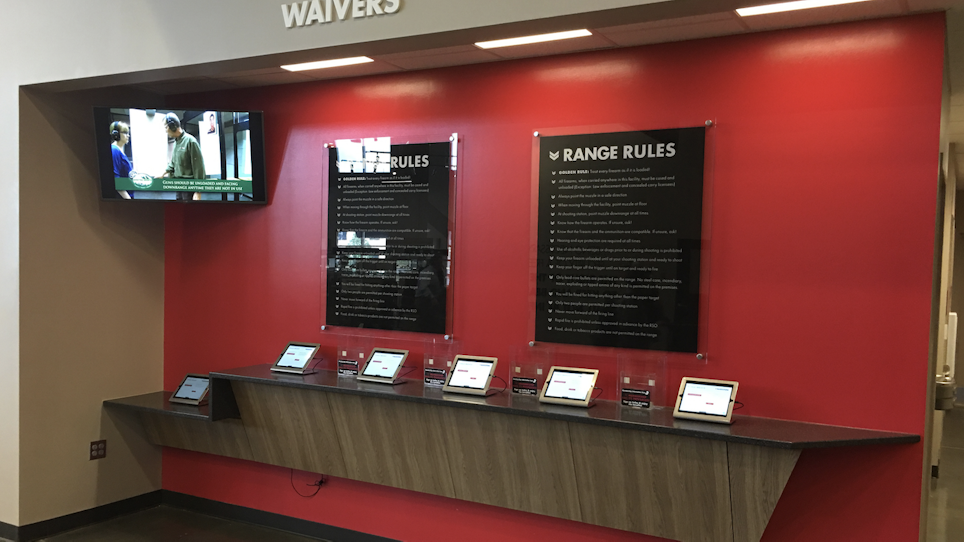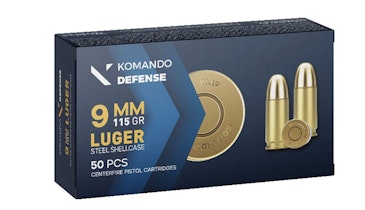Let’s make a bet. I’ll bet that you can name at least one personal injury attorney right off the top of your head.
Did I win? I’m confident that you came up with one or more names in a hot second. Why? It’s probably not because you drive by their office every day. It’s also not because you read an up close and personal interview about the firm’s charity work in the last issue of Selfless People Quarterly. While it’s possible that you saw the name on a 60 Minutes expose, that’s not likely it either. The odds are that you recalled that name, and maybe their marketing jingle, because you’ve seen their television advertisements at least 74.2 trillion times.
So, advertising works, right? The short answer is yes — with a disclaimer. It only really works with massive volume and repetition. Personal injury lawyers make unfathomable amounts of money, so they can afford to run their TV ads frequently enough to cause seizures. Most other local businesses don’t experience the joys of that kind of revenue per customer, so 24x7x365 TV and radio advertising isn’t an option. Running sporadic or occasional ads on the tube will only waste money as frequency and repetition are what makes them work.
What to do? Fortunately, there are several alternative strategies you can use to help customers remember you when it comes time to buy. One of my favorites regarding results and cost-effectiveness is content marketing. It’s a simple concept really, and it works like this. You figure out what type of information is valuable to your prospective customers and you deliver it to them — for free.
And why would you do this? Becoming the go-to business in any industry is all about mindshare. Try this impromptu experiment. Spend a few seconds thinking of restaurants near you where you would like to eat dinner tonight. Most people will come up with less than five (and usually fewer) names. In fact, you’ll probably struggle to come up with six or eight. And if I asked you the same question in a week or month or even a year, most of the same names would be on your shortlist. That’s because they occupy a more significant share of your brain than the other 95 eateries within driving distance. Those businesses succeed using a variety of strategies to rent space in your head, including location (driving by and seeing the sign frequently), advertising, word of mouth and so on.
The shooting sports industry is a bit different because you probably don’t have a hundred or so competitors within driving distance, but you still need to find ways to be the first name that pops into a customer’s head when the time is right. That’s where content marketing shines. No customer ever wants to listen to an advertisement, but lots of them would welcome the delivery of useful information that makes their life easier or helps them succeed in some way.
According to the textbook definition, content marketing is “a type of marketing that involves the creation and sharing of online material (such as videos, blogs and social media posts) that does not explicitly promote a brand, but is intended to stimulate interest in its products or services.” The Content Marketing Institute takes it a step further. “Instead of pitching your products or services, you are providing truly relevant and useful content to your prospects and customers to help them solve their issues.”
The goal is simple. Great content marketing is something your customers want to get. They’ll not only seek it but also will invest lots of their precious time consuming it. In short, when you do content marketing right, customers will “pay” to hear your marketing message.

When you do content marketing right, customers will “pay” to hear your marketing message by coming to your business or using your services. (Photo: Tom McHale)
Examples Everywhere
One of the oldest examples of great content marketing is a magazine called The Furrow. John Deere published the first issue 123 years ago, and it’s still an incredibly popular read in the company’s core customer demographic.
Chock full of technical information, how-to stories and narrative, it’s something people want to get. I encourage you to look it up at JohnDeereFurrow.com. You’ll notice that it’s stuffed with useful information. You’ll also see that it’s not littered with advertisements such as “Tractors 25 percent off today only! All credit applications accepted!”
 Have you ever watched a video on YouTube that shows you exactly how to fix something? Businesses from locksmiths to electricians to car mechanics often create channels offering free tips and advice. Have you ever downloaded a free whitepaper or how-to guide from a website?
Have you ever watched a video on YouTube that shows you exactly how to fix something? Businesses from locksmiths to electricians to car mechanics often create channels offering free tips and advice. Have you ever downloaded a free whitepaper or how-to guide from a website?
How about all those expert guests you see on television news programs? Sure, they get paid, but those interviews sell their brand as subject matter gurus and help them sell more books, appearances and seminars. Businesses and individuals that invest in delivering information do so to establish themselves as credible experts and the “go-to” source for the services they provide. As a result, they occupy a share of the consumer’s mind.
Before we get into specific ideas, know this. Content marketing requires commitment over time. It’s not as easy as writing a check and marking the item off your to-do list. Week in and week out, you’ll need to persevere. While some forms of content marketing, such as The Furrow, have hard costs associated with production and distribution, there are plenty of things you can do that require only your time and effort.
Before you start, it’s essential to harness the passion already in your store. Do you or one of your staff love to study old guns? Then you have an excellent content source about identification and valuation. Figure out what your knowledge assets are and make use of them. Not only will you have a never-ending supply of content, but the passion will also show in the end product, and customers will respond to that.
Newsletters
One of my favorite content marketing methods will cost you less than $50 a month, plus your time. Contrary to popular belief, email marketing is not dead, nor has it been swallowed up by social media marketing. In fact, the pendulum is swinging back toward that tried and true method. That’s because marketers are figuring out that hip new social media channels don’t give them direct access to, and ownership of, their prospective customer connections.
There’s a catch. Landing a coveted spot in someone’s inbox is a fiercely competitive game. That’s why your emails can’t be spammy or full of advertisements. Who wants to allocate their precious time to reading junk like that? Consider these three tips for making a compelling newsletter that people will want to receive.
1. Make it personal. Effective marketing is about relationships, so keep your content conversational and in your voice. Sterilized marketing fluff is about as exciting as … sterilized marketing fluff. Open each letter with a note about what’s happened the previous week, updates on new products, or maybe a bit of personal advice. Think about a compelling topic you’d discuss with a customer who walked into the store and write that.
2. Make it useful. If every single newsletter doesn’t have a tip or how-to article, then you’re doing it wrong. You don’t have to write lengthy epistles to share your knowledge. A couple of hundred words and a photo is enough to share bite-sized tips like how to zero a new scope, improve trigger control or how to remove rust from that old family heirloom.
3. Don’t spam. Communicate a schedule and stick to it. If you tell subscribers that it’s a weekly email, then do that every week. Don’t be tempted to launch interim promotional notifications unless it’s important and time sensitive.
Fortunately, launching a newsletter these days is easy. Check out services such as MailChimp and Constant Contact. They’ll get you started with attractive, pre-built templates in no time.
Inserts and Handouts
Every time you sell a gun or optic, you have a golden opportunity for content marketing. When someone buys a rifle, what’s the first thing they need to do? Zero it. Why not write up a one-page instruction sheet, branded with your logo and store information, and stick it inside the box?
When you sell a handgun, why not include a one or two-page handout featuring basic handgun shooting tips? For example, you might create “Five Ways to Improve Your Handgun Accuracy, brought to you by (your business name).” Or, when you sell a silencer, include a handout with cleaning and maintenance advice. Businesses don’t hesitate to spend thousands on logo items such as hats, shirts and bumper stickers, most of which go in the trash or sit on a shelf.
Why not make free logo items that will get used?
Radio
Content doesn’t always have to be written. If you’re a talker by nature, consider a strategy used by AZFirearms.com, the “biggest little gun shop” in Arizona. They’ve launched a weekly radio show broadcast over the internet. Gun Freedom Radio is a two-hour show starting every Saturday at 1 p.m., although listeners can access any show at any time. AZ Firearms owners Dan and Cheryl Todd do most of the talking, but also invite local and state politicians and various subject matter experts to add listener appeal.
AZ Firearms operates a web store in addition to its brick-and-mortar business, so reaching a broad audience outside of its local geography is just fine. If you want to offset costs, you can indeed sell advertising space, or you keep things exclusive to the promotion of your business.
Live Events
Local events can be structured to provide content marketing benefits too. For example, my local Tractor Supply Store brings in a veterinarian one Sunday per month to offer deeply discounted health checks, heartworm and flea protection prescriptions. The services are deeply discounted, yet everyone wins. It’s great for customers, the vet gets a pile of appointments in a short period and Tractor Supply receives a store full of customers.
Blackstone Shooting Sports in Charlotte, North Carolina, touches on the content marketing concept with a regular auction event. While an auction may be considered more “salesy” than “content” it’s a great way to add value and excitement. Adding some historical guns to the mix allows sponsors to bill the event in more of an educational and appraisal opportunity. Speaking of that, if you have a hobbyist gun historian on staff, why not offer and promote a free “evaluate your old gun” program? It’s a great way to get new customers into the store by offering to share expertise you already have. It doesn’t have to be a formal event, provide the service during regular business hours.
Another tactic Blackstone Shooting Sports uses is a “Clean Your Glock” event. Customers bring their dirty guns and learn how to clean it properly. It’s a value-add to new gun owners and a great way to sell gun cleaning accessories without being pushy.
Social Media
Why is social media last on the list? I have to confess that the placement is deliberate. While “market on social media!” is somewhat of a default modern business development strategy, it’s important to understand what it can and can’t do.
Here’s the thing. Successful marketing hinges on building relationships with your existing and prospective customers. On social media platforms, you don’t own that connection. In fact, you don’t even own the “names” or social media IDs of your followers. Worse, you have no control over whether or not prospects see your carefully crafted messages.
Companies such as Facebook, Instagram, Twitter and the rest, believe that they know better than their users about what those users want to see. As a result, they’ll decide what to show and not show on everyone’s timeline. While numbers vary, assume that less than ten percent of the people who choose to follow your page will ever see a given post. Not because they aren’t looking, but because social media algorithms don’t present it on the timeline at all.
What to do?
There are two great uses for social media. First, use it to find prospective customers and drive them to your direct connection programs such as a newsletter. Second, build content for channels where you do have control. Once content is created, it costs you nothing to share it on social media. If you’re not relying on that channel, there’s little harm in sharing content there.
The Bottom Line
Successful marketing isn’t about smart baiting techniques that encourage a prospect to make a spontaneous decision. Instead, good marketing is all about building trust, and by doing so, leasing a share of your prospect’s brain, so your business becomes the go-to resources for their needs.
While a successful content marketing initiative requires time and commitment, it’s easy to do without a significant cash outlay.






